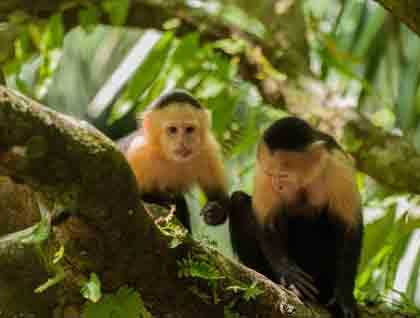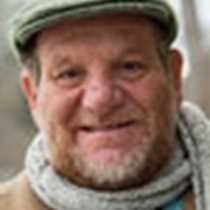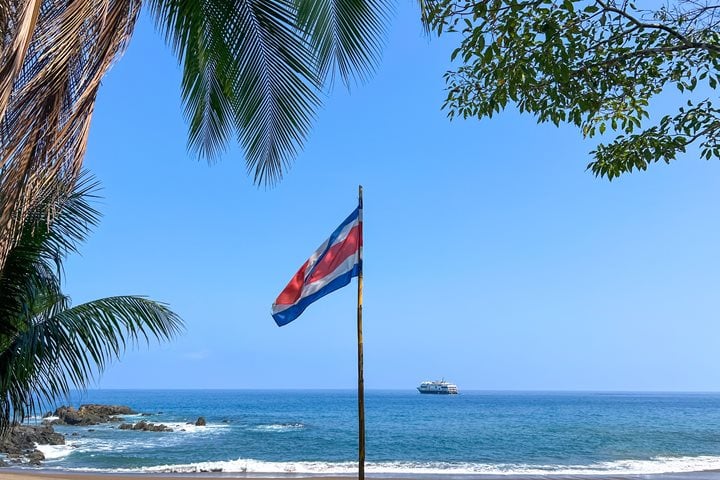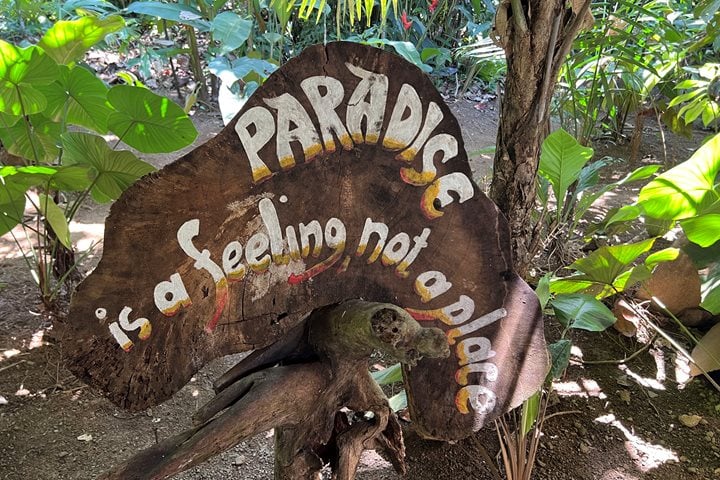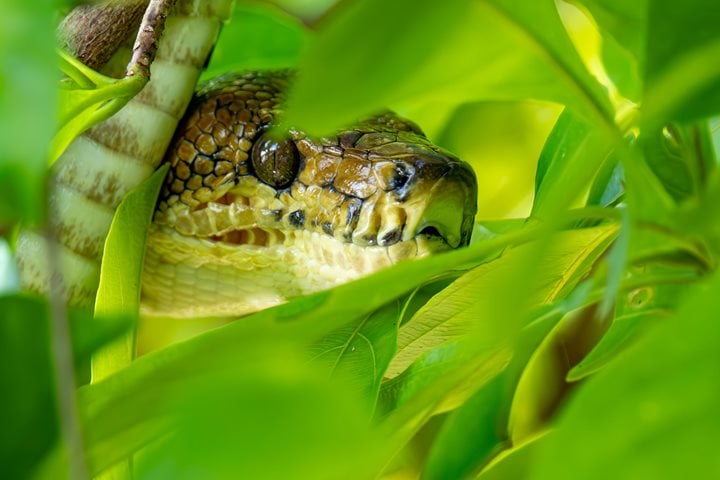This morning started with a wonderful visit to Coiba, the third-largest marine park in the world. Since it is a marine park we could only visit a small part of it through the eyes of our masks and snorkels, or looking through the surface from the cockpits of our kayaks. At Coiba the corals are not as colorful as other coral reefs, but they are pristine and always offer myriad beautiful fish to see. Snorkeling over the reefs, it is hard to believe we are here. The clarity of the water amazes us and it is easy to lose our thoughts as we follow a school of scissor-tailed chromis, or silently watch a giant damselfish as it darts in and out of its coral retreat.
Our base of operation is a small island hardly the size of a football field. When we landed we discovered that we would be sharing the beach with hundreds of hermit crabs foraging for food between the grains of sand. National Geographic photographer Erica Larsen and I did a photo workshop on macro photography and many of us spent most of our time trying to record our little companions.
We returned to National Geographic Sea Lion and made a small navigation to a new anchorage located just offshore of the Coiba Ranger Station. The last guest hardly hit the beach before someone sighted a group of white-faced capuchins eating coconuts and, much to the dismay of the wonderful crew who had brought our lunch ashore for us, lunch would have to wait. It is hard to believe that anything could be as entertaining as a group of monkeys. One at a time they would make their way to the coconuts spewed on the ground to take their turn at some food.
On the way to the monkeys, one of the local workmen called to me that a crocodile was at the beach. Which way do we go? I thought. We decided on the monkeys first and after a few minutes of primate entertainment we headed to the mangrove beach to see a huge crocodile eating the remains of a cleaned fish. We had seen a couple of crocodiles on our voyage through the canal, but neither this close nor this large. We kept a healthy distance and photographed with telephoto lenses.
Finally, it was time for our lunch, a wonderful meal of good old-fashioned hamburgers and hot dogs, and all of the fixings of a first-class cookout, including the lemonade and cookies for dessert. After lunch, we rested, but not for too long. Besides the monkeys and crocodiles, the area around the ranger station was filled with colorful birds like the crimson-backed tanager, and red-legged honeycreeper. A short bird walk provided a perfect end to our picnic at Coiba.
Alas, we had miles to go before our next stop tomorrow morning, so it was back to the ship to begin our journey. As we headed to Costa Rica, we had one last presentation about the history of Panama, by our naturalist Christian.

